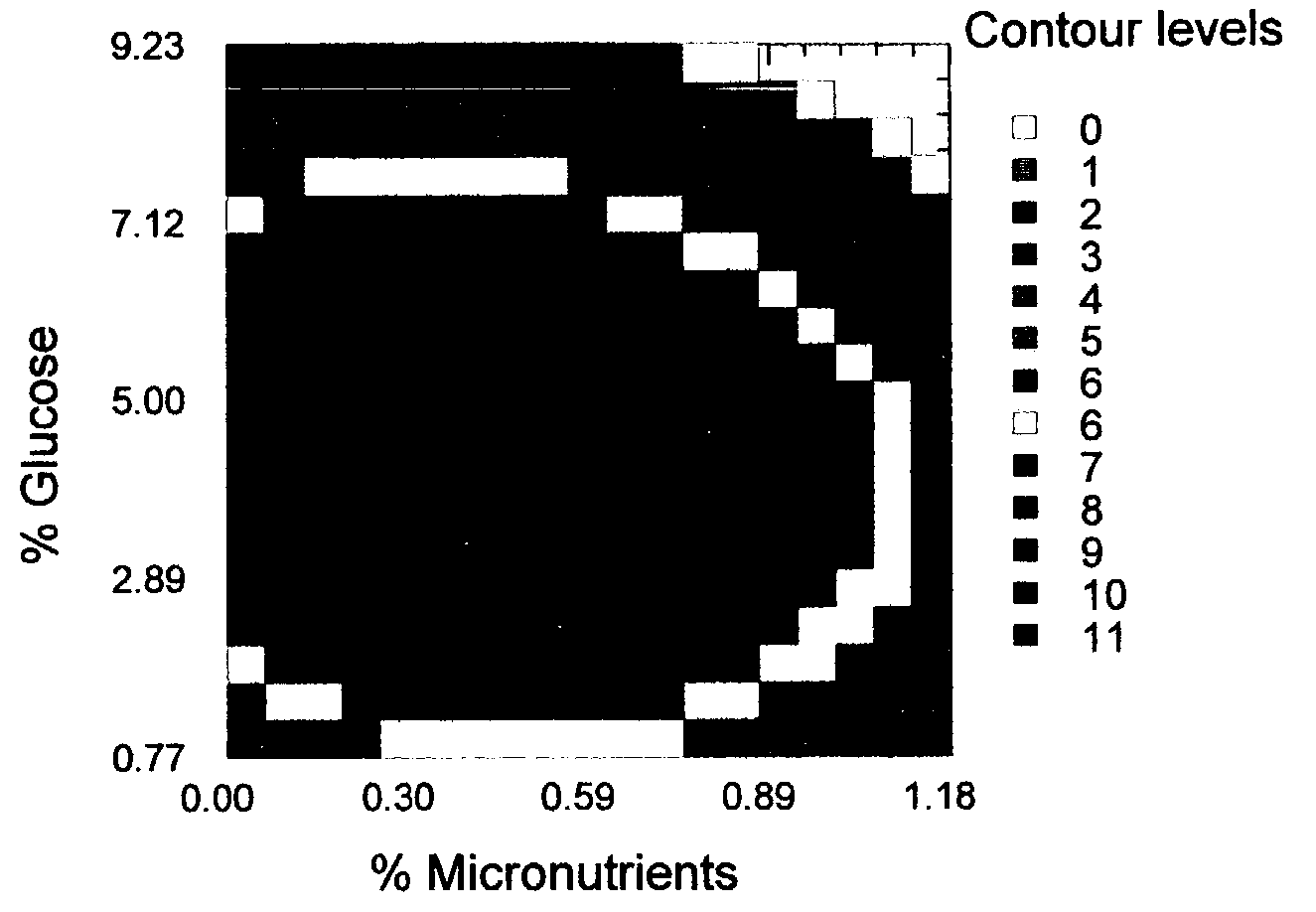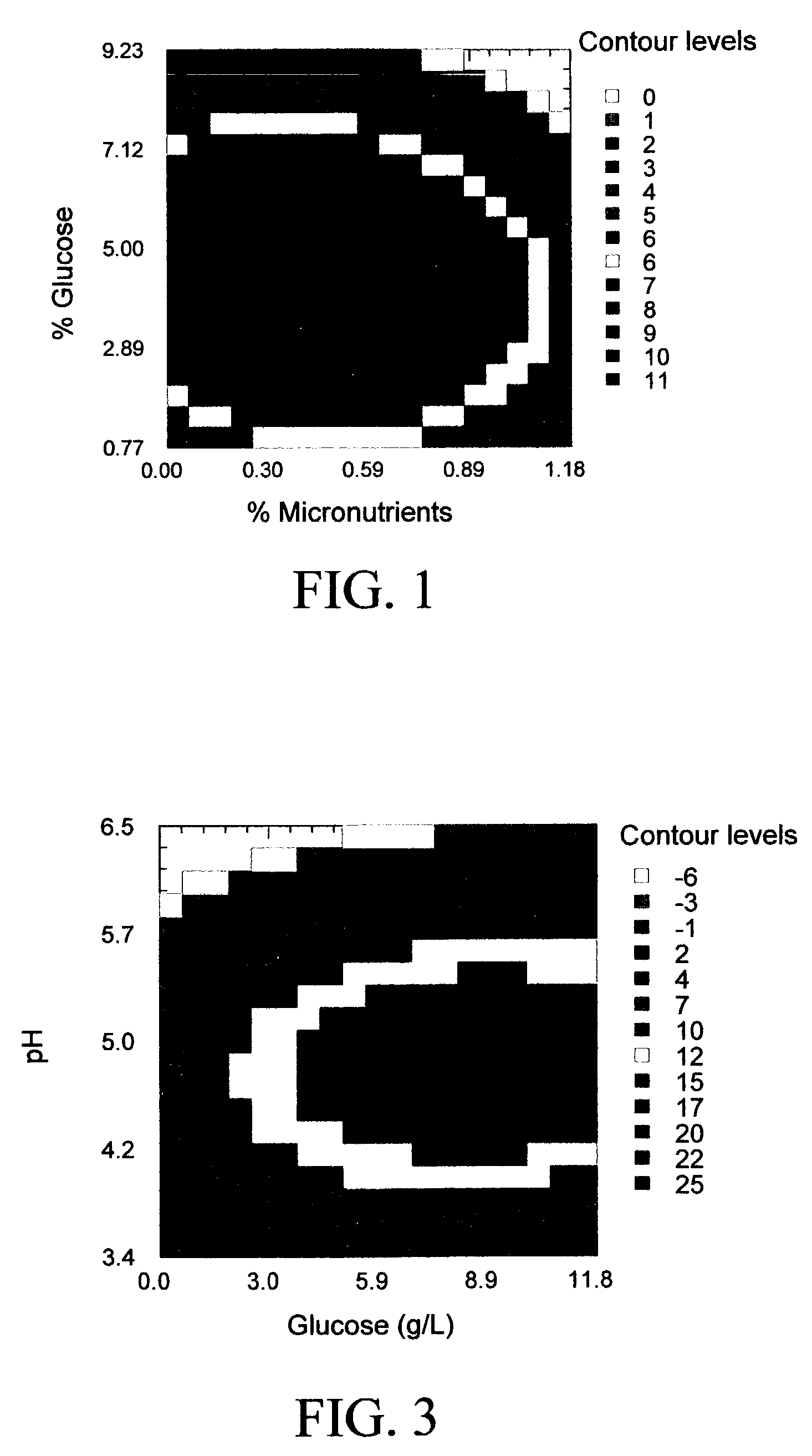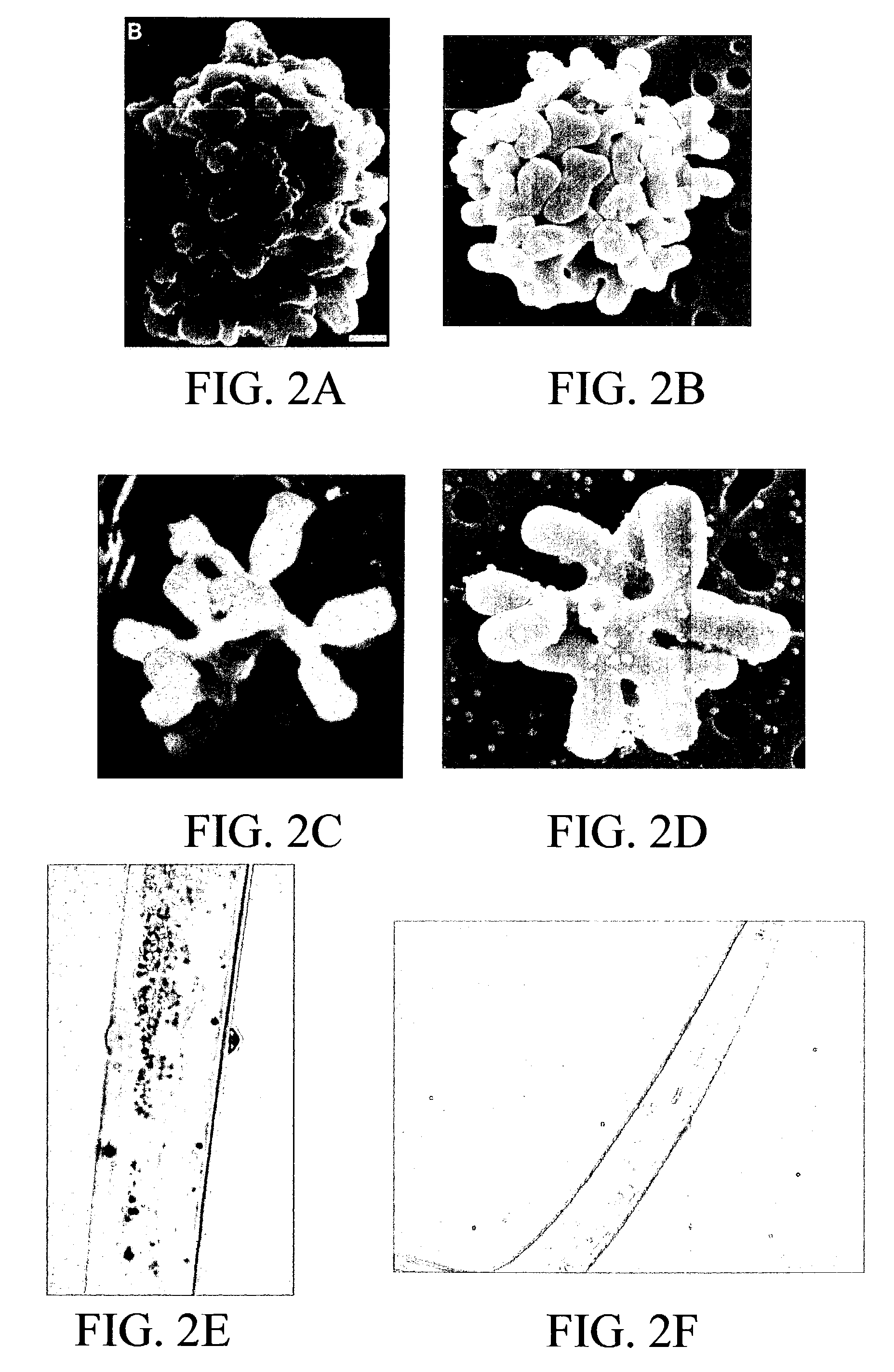Materials and methods for in vitro production of bacteria
a technology of in vitro production and bacteria, applied in the direction of biocide, microorganisms, biochemistry apparatus and processes, etc., can solve the problems of insufficient time to develop and register new synthetic compounds for nematode control, and the difficulty of preventing this damag
- Summary
- Abstract
- Description
- Claims
- Application Information
AI Technical Summary
Benefits of technology
Problems solved by technology
Method used
Image
Examples
example 1
Preparation of Nematodes and Growth of Pasteuria in Co-culture with Enterobacter cloacae
[0062]Infected Rootknot (Meliodogyne arenaria) females were surface washed in autoclaved water. Approximated 100 ml of water were passed over the nematodes in a fine mesh screen. These nematodes were then crushed between autoclaved glass slides in a drop of water. The suspension of material was inoculated into 24 well, sterile plates which contained sterile insect cell culture media (0.5% glucose and Leibovitz) with 5% Bovine Calf Serum (BCS) added. Growth was observed within 24 hours at room temperature. The growth consisted of motile rods, which was not expected. This material was observed for several days and a few refractile bodies resembling Pasteuria mycelial balls appeared. When stained with Gram's Stain the culture contained both negative and positive material. The structures resembling mycelial balls were Gram positive.
[0063]Material from agar plates was inoculated into nutrient broth (...
example 2
Choice of Medium for Co-culture
[0064]Nutrient broth (NB) and 0.5% glucose can be used as the media. Endospores produced in the NB attached more readily to the J2's than those produced in 0.5% glucose. A sterile egg yolk preparation was added to the NB and endospores were produced. This media contained 5% BCS and 5% egg yolk mixture. The endospores attached to the J2's.
[0065]The NB media containing the egg yolk and salts was diluted 1:1, 1:5 and 1:10. In all cases growth and endospores were obtained. One percent glucose was used with the egg yolk and salts and good growth and endospores were obtained.
[0066]Subsequently, it was determined that the egg yolk mixture could be reduced and that dried egg yolk could be used. Additional media include NB (8 g / l) or Glucose (10 g / l) plus 2.5% egg yolk and 5% saturated Wesson Salts. The richness of these media can be reduced if desired.
[0067]The tomato experiment was repeated and in all cases female root knot nematodes were recovered which were...
example 3
Production of E. cloacae Filtrate
[0068]E. cloacae (ATCC deposit number PTA 2324) was grown to turbidity in glucose salts broth containing 2 g / L glucose, 1 g / L each of ammonium dihydrogen phosphate and dipotassium phasphate, 5 g / L NaCl, 0.2 g / L magnesium sulfate, 10 mL sterile liquid egg yolk (all obtained from SIGMA), and 0.8 g / L Essential Minor Elements (SOUTHERN AG INSECTICIDES, Palmetto, Fla.) as a source of trace metals. After 48 hours at 35° C., the bacteria were removed from the culture medium with a 0.2 μm filter. The resulting filtrate was used to supplement various commercial growth media for support of P. penetrans as well as a stand-alone growth medium.
[0069]The glucose concentration used in producing the filtrate via E. cloacae metabolism was optimized by Response Surface Analysis (RSA; NCSS, Jun. 7, 2001, release, NCSS STATISTICAL SOFTWARE, Kaysvile, Utah). FIG. 1 shows RSA data on E. cloacae filtrate presented as a contour plot. Table 1 and Table 2 are the experimental...
PUM
| Property | Measurement | Unit |
|---|---|---|
| oxidation reduction potential | aaaaa | aaaaa |
| oxidation reduction potential | aaaaa | aaaaa |
| oxidation reduction potential | aaaaa | aaaaa |
Abstract
Description
Claims
Application Information
 Login to View More
Login to View More - R&D
- Intellectual Property
- Life Sciences
- Materials
- Tech Scout
- Unparalleled Data Quality
- Higher Quality Content
- 60% Fewer Hallucinations
Browse by: Latest US Patents, China's latest patents, Technical Efficacy Thesaurus, Application Domain, Technology Topic, Popular Technical Reports.
© 2025 PatSnap. All rights reserved.Legal|Privacy policy|Modern Slavery Act Transparency Statement|Sitemap|About US| Contact US: help@patsnap.com



